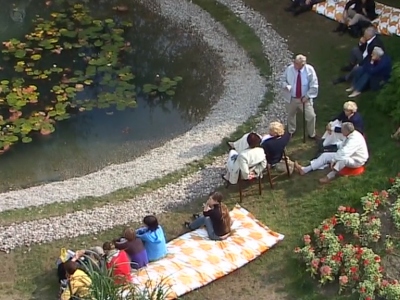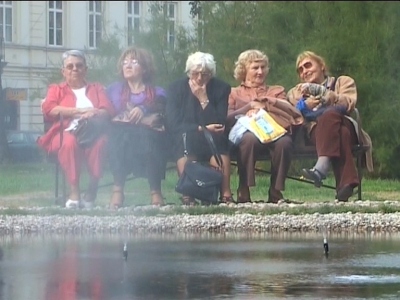Joanna Rajkowska
Oxygenator
Joanna Rajkowska creates sculptures, photographs and drawings, but is known primarily as the author of objects and installations displayed in public space. She graduated with a degree in art history from the Jagiellonian University and painting at the Academy of Fine Arts in Krakow. At the beginning of her artistic career, she formed the theory of The Body as Sculpture, making the body and its image the subject of her work. Threads from her personal life and her immediate family often feature in Rajkowska’s pieces.
Over time, Rajkowska’s productions began to take on a political character. Most of her projects are socially engaged, with the artist often acting as a spokesperson for the excluded and the forgotten. The well-known artificial palm, Greetings from Jerusalem Avenue, reminds about the community of Jews who once constituted a significant part of Warsaw’s population and offers a concrete meaning to the hitherto incomprehensible name Aleje Jerozolimskie. The installation was initially criticized, but over time it was accepted and became the hallmark and tourist attraction of Warsaw. The artist refers to her public space projects as social sculptures. Their purpose is to provoke reflection and discussion between various, often conflicting social groups.
Another example of such work is the Oxygenator installation at Grzybowski Square in Warsaw. It consisted of an artificial pond equipped with ozone generating devices and producing a characteristic mist. The pond was surrounded by decorative greenery, benches and seats designed by Michał Kwasieborski.
Grzybowski Square, an intersection of various contemporary and past narratives, is burdened with traumatic histories. Various social and religious groups come here – there is a church and a synagogue next to the square, and during the war it was the site of the Ghetto. In addition to historic sacred buildings, old Jewish tenement houses, modernist post-war blocks and signs of capitalist changes – modern office buildings, surround the square. Despite the shared public space, the groups using it do not communicate with each other. The artist’s intention was to integrate the local community by creating a space where one can breathe – literally and figuratively. The project was well received by local residents and crowds of people of all ages and social groups visited the pond. The presented film documents the preparation, implementation and the reception of the installation by regular visitors to the square; it is supplemented with comments from the artist and people involved in the project. Despite the promises of Warsaw authorities and the appeals of residents, Oxygenator did not remain a permanent fixture of Warsaw’s urban space.


